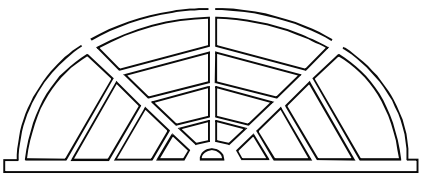-
Match the street layouts of ancient Indian settlements in Group – I with their corresponding types in Group – II
Group I Group II 
1. Nandyavarta 
2 Swastika 
3. Padmaka 
4. Chaturmukha 5. Karmukha
-
- P-2, Q-4, R-3, S-5
- P-2, Q-3, R-4, S-5
- P-4, Q-3, R-5, S-1
- P-4, Q-3, R-2, S-1
Correct Option: B
P-2, Q-3, R-4, S-5
The following are the important town classifications of Ancient India-Dandaka, Sarvathobhadra, N andyavarta, Padmaka, Swastika, Prastara, Karmuka and Chaturmukha.
NANDYAVARTA
This plan is commonly used for the construction of towns. It is generally adopted for the sites either circular or square in shape, 3000 - 4000 Houses. The streets run parallel to the central adjoining streets with the temple of the presiding deity in the center of the town. "Nandyavarta" is the name of a flower. 
PADMAKA
This type of plan was practiced for building of the towns with fortress all round.The pattern of the plan resembles the petals of lotus radiating outwards from the center.The city used to be practically an island surrounded by water, having no scope for expansion. 
SWASTIKA
Swastika type of plan contemplates some diagonal streets dividing the site into certain rectangular
plots. The site need not be marked out into a square or rectangle and it may be of any shape.A rampart wall surrounds the town, with a moat at its foot filled with water.Two main streets cross each other at the center, running south to north and west to east.
KARMUKA
This plan is suitable for the place where the site of the town is in the form of a bow or semi-circular or parabolic and mostly applied for towns located on the seashore or riverbanks.
The main streets of the town run from north to south or east to west and the cross streets run at right angles to them, dividing the whole area into blocks. The presiding deity, commonly a female deity, is installed in the temple build in any conveni ent pl ace. e.g. Shahj ahanabad; kaveripattinam
CHATURMUKHA
Chaturmukha type of plan is applicable to all towns starting fr om the largest town to the smallest village.Site may be either square or rectangular having four faces.The town is laid out east to west lengthwise, with four main streets.The temple of the presiding deity will be always at the center. 

